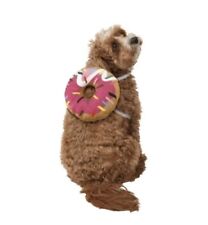Cat Losing Teeth

6. My cat is male, indoors, and about 12 years old. I have had him since a kitten so I know he has had no prior health problems and has had his shots. Just reciently I have noticed that his long front left tooth was missing. His two longer top teeth normally stick out of his mouth like fangs. I was inspecting the rest of his mouth and there is a black, rough spot (about 1/2 cm) on top of his longer top right tooth so I worry that it will fall out soon as well. He still speaks as often as normal and eats hard food like he always has with no sign of weight loss. He does not seem any less energetic or troublesome. I feel like I should take him to a vet but money is extremely tight in the family and worry about what the cost will be. Does anyone know what exactly is wrong with him and about what the cost would be to treat it? Also, what would be the lasting affect if he never got any treatment?

The only way to know for sure why the tooth fell out and the cause of the black spot is to have your veterinarian do a close examination and possibly dental x-rays. Considering the age of your cat, the canine tooth (one of the front “fang”-like teeth) probably fell out as a result of periodontal disease such as resorptive lesions (FORLs) (similar to human cavities) or infection. Resorptive lesions are also known as Feline Odontoclastic Resorptive Lesions (FORLs). This is largely a problem influenced by the cat’s genetics and poor dental hygiene. When FORLs develop, the enamel wears away, exposing the inside of the tooth. These can be very painful for the cat, as each tooth has a nerve, artery and vein inside of it. When the nerve is exposed to the oral environment, pressure on the tooth (by the lips, food, drinking, etc) can cause pain. Over time the tooth and the tooth root can simply be eaten away and the tooth falls out. The problem with this is that often the root may still be in place and can become infected – leading to painful tooth root abscesses. Untreated tooth root abscesses can rupture into the nasal cavity, causing chronic nasal discharge and discomfort. Any chronic infection can also put the body’s bloodstream at risk – bacteria can access the bloodstream from infected gums and teeth.
Cats are extremely stoic animals and it is difficult to tell when they are in pain. This is a protective measure put in place by evolution. In the wild, animals that show sickness or weakness are more likely to become prey. Oral pain caused by dental disease is one of the most overlooked causes of pain in cats. Most cats “seem fine” but their behavior and eating habits may be affected more than you realize.
Most cats avoid oral pain by swallowing their dry food whole or chewing only with one side of their mouth. Commercial cat food is highly digestible but not chewing properly may contribute to poor digestion over time. After teeth with FORLs or infected teeth are removed and the mouth is treated, many owners note that their cat is brighter, interacting more with the family and eating better. Some of the behaviors that many people think are “signs of aging” (sleeping more, change in appetite, being less social, problems with moving around, etc.) are actually signs of ill health or pain. Sometimes the cat is no longer in pain once the teeth fall out, but it is not good to let it get to this stage.
Cost to evaluate and treat dental problems varies widely, depending on where you live. It is best to contact your local veterinarian for an evaluation and cost estimate. It is best to select a veterinary facility that has the capability to take x-rays of the teeth. These x-rays will allow the veterinarian to evaluate the health of the teeth below the gum line. Your cat’s black, rough spot may be a sign that there are other problems where you can’t see it. You may be able to find inexpensive dentistry but buyer beware – sometimes “cutting corners” won’t fully diagnose or treat the problem.

Rubies Pet Shop Boutique Dog Donut Costume Size S/M Halloween Parades Dress Up
$9090.00
NEW HALLOWEEN TRICK OR TREAT PET COSTUME FOR DOGS & CATS LADYBUG
$7399.00
Print letter Pet Dog Cat Vest Clothing Puppy Costume Summer T Shirt Costumes # —
$4098.00
Funny Pet Cosplay Clothes Pirate Costume Dog Puppy Cat Suit w/ Hook Size- Large
$1448.00
Welbilt cover vinyl lower mod GCP00044
$756.77
HPZ Pet Rover Titan-HD Premium Super-Sized Dog/Cat/Pet Stroller SUV Green Camo
$557.65
Mascot Costumes for Adults White Fox Wolf Husky Dog Movie Props Show Halloween
$369.99
Japanese Style Handmade Costumes Samurai Armor For Dog Made from Genuine Leather
$328.41
Japanese Style Handmade Costumes Samurai Armor For Dog Made from Genuine Leather
$301.71
Japanese Style Handmade Costumes Samurai Armor For Dog Made from Genuine Leather
$301.71









